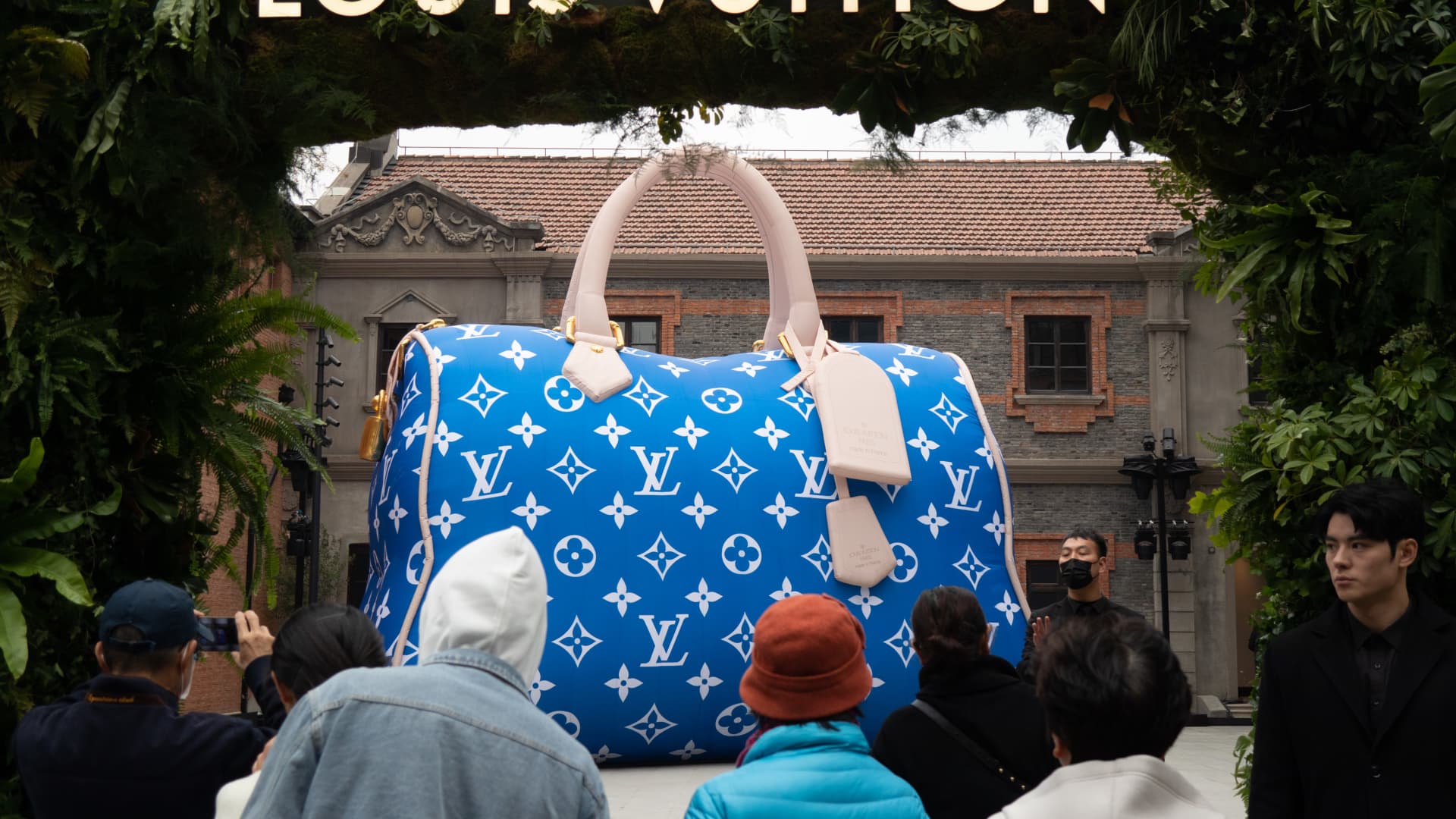A view of a scaled-up mock of a Louis Vuitton bag during a promotional event by the French luxury brand in Shanghai on Dec. 4, 2023.
Future Publishing | Future Publishing | Getty Images
BEIJING — China’s luxury sales are rebounding, and while they’re not back to 2021 levels yet, industry analysts and financial releases from major brands point to new growth opportunities versus pre-pandemic trends.
LVMH was the latest luxury giant to announce 2023 results on Thursday, and noted that fashion and leather goods saw growth of more than 30% in China in December.
The company’s results showed that despite some resumption of overseas travel, more of China’s consumers are buying luxury products at home.
“Regarding the size of stores in China … there are twice as many Chinese customers as in 2019,” Bernard Arnault, chairman and CEO of LVMH, said on an earnings call, according to a FactSet transcript.
“It means that the domestic purchase in China has grown significantly, so we have to meet that,” he said.
The mainland China personal luxury market grew by about 12% last year to more than 400 billion yuan ($56.43 billion), according to consulting firm Bain & Company.
While that’s still not back to 2021 levels, due to soft consumer sentiment and the resumption of some overseas luxury shopping, Bain expects the domestic luxury market to only grow in the coming years.
Luxury purchases in mainland China accounted for about 16% of the global market last year, and is expected to reach at least 20% in 2030, said Weiwei Xing, a Hong Kong-based partner at Bain’s consumer products and retail practices in Greater China.
“All of that data points to the importance of the Chinese luxury consumer and the China market,” she told CNBC.
Cartier parent Richemont said earlier this month that sales in mainland China, Hong Kong and Macao grew by 25% in the three months ended Dec. 31.
In an earnings call, the company’s CFO Burkhart Grund described the Chinese business overall as “rebuilding,” especially in the context of the prolonged real estate slump and the slow recovery of overseas tourism by Chinese shoppers.
Consumers in China have been reluctant to spend in the last few years due to uncertainty about future income and a broad slowdown in economic growth.
Luxury brands have increasingly turned to online channels to ensure customer engagement, said Xing from Bain. She added that companies that did well in 2023 sold luxury goods deemed investible, having iconic aspects that would last over the years.
Niche brands and markets
In all, about half the leading brands and several niche brands, have rebounded to 2021 sales levels, the Bain report said, without sharing specific names.
“Niche brands that have consistently invested in building brand desirability over multiple years have experienced success,” the report said.
As companies compete for a slice of the Chinese consumer market, one emerging segment is bedding and fine linen.
At least four investment deals have occurred in that category in the last 18 months, according to PitchBook data. The latest transaction listed was the acquisition in August of Italian luxury bedding company Frette by investors that included Ding Shizhong, the chairman of Chinese sportswear company Anta.
“Consumer attitudes toward bedding products are gradually changing, with more consumers willing to pay for high-quality bedding and placing greater emphasis on product quality, functionality, and additional services,” said Ashley Dudarenok, founder of ChoZan, a China marketing consultancy.
She noted that domestic home textile brands “have been actively pursuing ‘technological innovations’ and exploring the high-end bedding market to meet consumer demands.”
However, the potential market is relatively untapped.
While U.S. consumers account for well over 40% of the global market for high-end bed and bath textiles, Chinese consumers currently only account for about 5% or less, according to estimates from the Beijing-based consumer research institute of ZWC Partners, a venture capital firm.
Their research found that the Chinese luxury and affordable luxury segment of the bed, bath and textile market was about $700 million large in 2023, a tiny fraction of a domestic bedding market that’s about $10 billion large.


